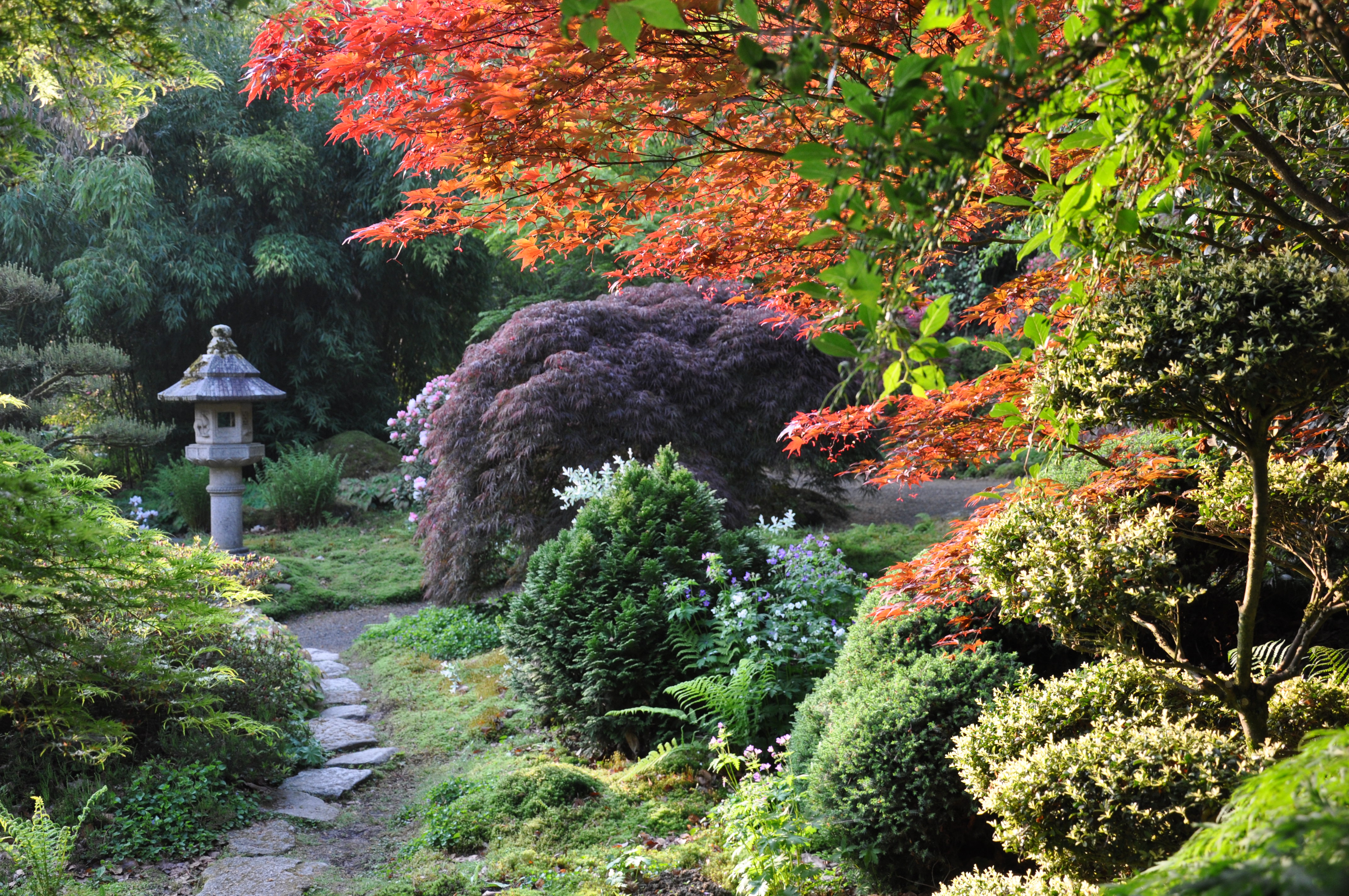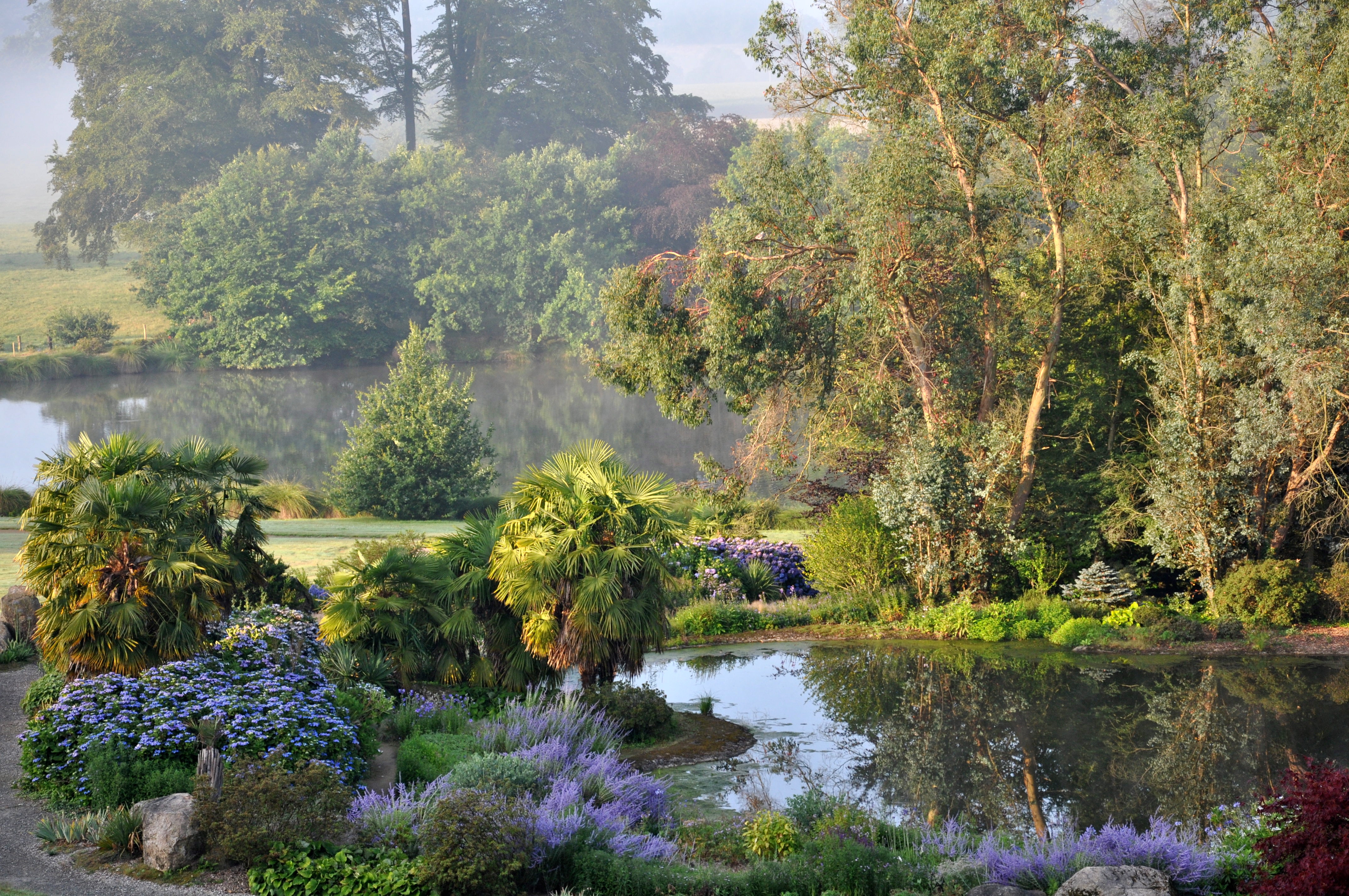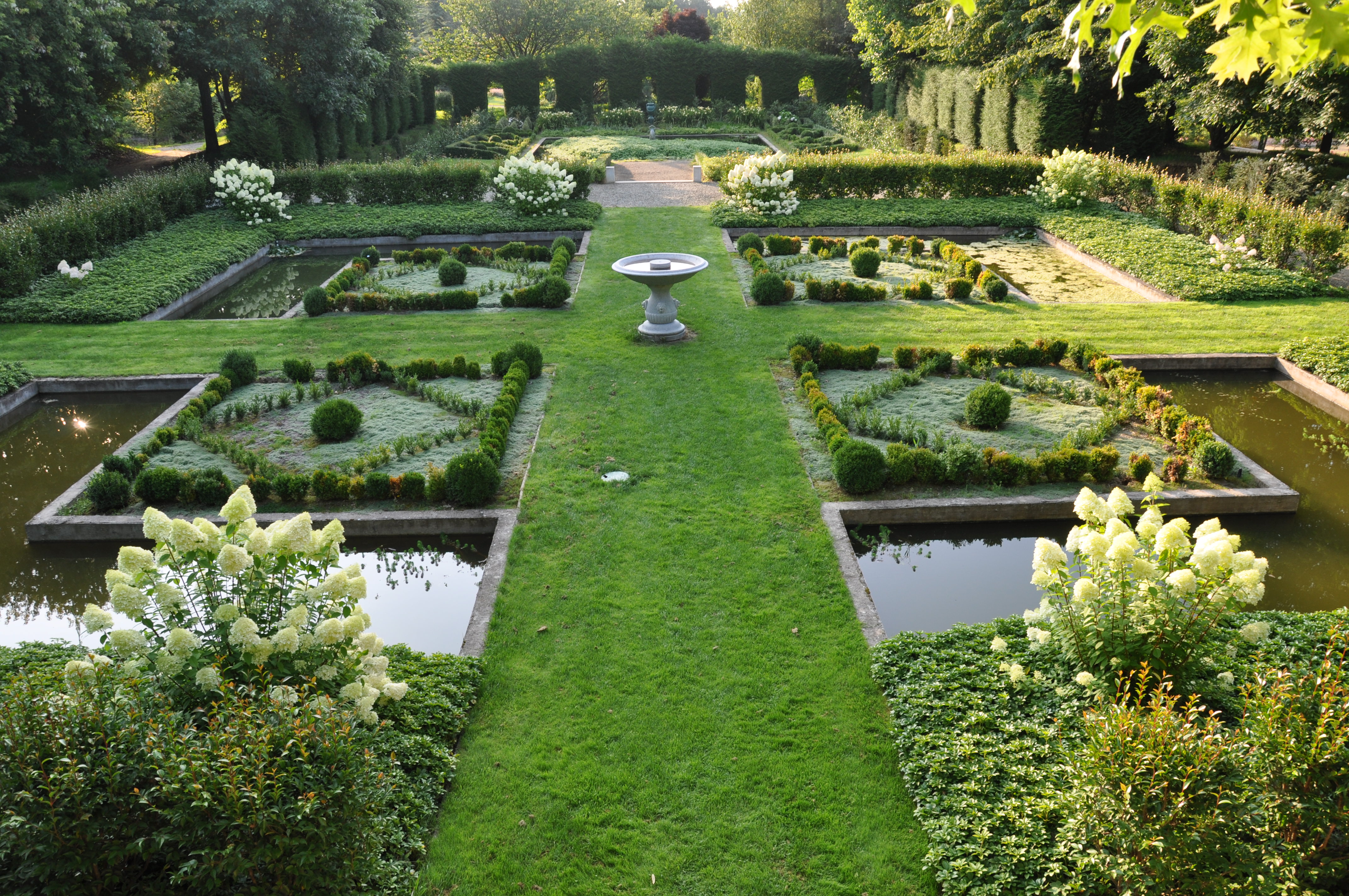Botanical Garden Of Upper Brittany on:
[Wikipedia]
[Google]
[Amazon]
The Botanical garden of
Parc floral de Haute-Bretagne
site d
Tourisme Haute-Bretagne
/ref> around the Château de la Foltière. In 1796 the old
site d
Comité des parcs et jardins de France
/ref> In 1820, the Estate of La Foltière was bought by the family Frontin des Buffards. In 1847, the land surrounding the pond in the park was redesigned as an English romantic landscape garden, with winding paths that follow the terrain, and a view from the lawn in front of the house to the church tower in the village.







 The botanical park is made up of three parts :
The botanical park is made up of three parts :
Parc botanique de Haute-Bretagne
Parc botanique de Haute-Bretagne
Gardenvisit
Landscape Gardens in Brittany Botanical gardens in France Gardens in Ille-et-Vilaine
Upper Brittany
Upper Brittany (french: Haute-Bretagne; br, Breizh-Uhel; Gallo: ''Haùtt-Bertaèyn'') is the eastern part of Brittany, France, which is predominantly of a Romance culture and is associated with the Gallo language. The name is in counterpoint to ...
( French: ) is a private estate with an area of , located in the Ille-et-Vilaine
Ille-et-Vilaine (; br, Il-ha-Gwilen) is a department of France, located in the region of Brittany in the northwest of the country. It is named after the two rivers of the Ille and the Vilaine. It had a population of 1,079,498 in 2019.
department of Brittany
Brittany (; french: link=no, Bretagne ; br, Breizh, or ; Gallo: ''Bertaèyn'' ) is a peninsula, historical country and cultural area in the west of modern France, covering the western part of what was known as Armorica during the period ...
, near the medieval city of Fougères
Fougères (; br, Felger; Gallo: ''Foujerr'') is a commune and a sub-prefecture of the Ille-et-Vilaine department in the region of Brittany in northwestern France.
As of 2017, Fougères had 20,418 inhabitants. The Fougères area comprises appr ...
. The park is part of the estate of La Foltière, where stands the Château de la Foltière, and was built in 1847.
Location
The Botanical garden of Upper Brittany is located on the village of Le Châtellier (Ille-et-Vilaine), approximately from the city of Fougères, between Rennes and the Mont Saint-Michel, near the A84 motorway.History
is the name of the estate, which means "ground where beech trees grow", the word being ancient French for "beech tree". The park was created in 1847,site d
Tourisme Haute-Bretagne
/ref> around the Château de la Foltière. In 1796 the old
manor house
A manor house was historically the main residence of the lord of the manor. The house formed the administrative centre of a manor in the European feudal system; within its great hall were held the lord's manorial courts, communal meals w ...
was the headquarters of an uprising against the government of the French Republic led by Count Joseph de Puisaye
Joseph is a common male given name, derived from the Hebrew Yosef (יוֹסֵף). "Joseph" is used, along with "Josef", mostly in English, French and partially German languages. This spelling is also found as a variant in the languages of the mo ...
.PARC FLORAL DE HAUTE BRETAGNE (25 ha)site d
Comité des parcs et jardins de France
/ref> In 1820, the Estate of La Foltière was bought by the family Frontin des Buffards. In 1847, the land surrounding the pond in the park was redesigned as an English romantic landscape garden, with winding paths that follow the terrain, and a view from the lawn in front of the house to the church tower in the village.
The gardens
The Arcadia Gardens
The first part : Arcadia refers to classical antiquity and the youthfulness of the garden. * The path of white pearls. This pathway is made up of five separate enclosures for which the gardener has composed five maxims. These emphasis the qualities he deems essential in the composition of a garden and where species from the five continents have been planted. * The1001 nights
''One Thousand and One Nights'' ( ar, أَلْفُ لَيْلَةٍ وَلَيْلَةٌ, italic=yes, ) is a collection of Middle Eastern folk tales compiled in Arabic during the Islamic Golden Age. It is often known in English as the ''Arabian ...
garden, inspired by Moorish water gardens, is the first garden one comes across on entering the park. A canal with fountains runs through the garden. At the far end are three cypress trees and on either side luxuriant vegetation including jasmine, damask
Damask (; ar, دمشق) is a reversible patterned fabric of silk, wool, linen, cotton, or synthetic fibers, with a pattern formed by weaving. Damasks are woven with one warp yarn and one weft yarn, usually with the pattern in warp-faced satin ...
roses and daphnes. Our senses are lulled by the music of running water, the heady perfume and beautiful colours of the exotic flowers.
* The city of antiquity evokes a journey around the Mediterranean. An archaeological site is represented by three central quadrants lined on either side by rows of juniper trees, and columns covered with climbing roses complete the scene. The fourth quadrant has retained its original function as a vegetable garden. And like a frieze enhancing a green dominated landscape, flower beds of hardy perennials surround the antique city.
* The city of Knossos
Knossos (also Cnossos, both pronounced ; grc, Κνωσός, Knōsós, ; Linear B: ''Ko-no-so'') is the largest Bronze Age archaeological site on Crete and has been called Europe's oldest city.
Settled as early as the Neolithic period, the na ...
, backs on to the walls of the city of Antiquity. The labyrinth is composed of a collection of 480 varieties of Camellia. The variety ''sinesis'' or "Chinese tea" flowers from around mid-September. Next comes '' Camellia sansanqua'' in early October and then Camellia japonica
''Camellia japonica'', known as common camellia, or Japanese camellia, is a species of flowering plant in the family Theaceae. There are thousands of cultivars of ''C. japonica'' in cultivation, with many colors and forms of flowers. In the U.S. ...
. March is the best time to discover the full range. At the end of the maze a minotaur awaits the children.
* Bamboo grove, a maze of bamboo which ends at a pond planted with lotuses (which flower at the end of summer) and in the middle of which are three pyramids covered with miniature bamboo.
* The secret garden, access to which is via an impressive and ornate staircase, is inspired by the humanistic ideal of the Italian Renaissance. It revives the "Secret Garden", vegetal parlour concept inherited from mediaeval tradition.
* The ancient rose walk relates the starting story from the first rose bushes known in antiquity down to those at the beginning of the 20th century—mysterious and complicated hybridizations. A story illustrated by the natural grace of these bushes, the beauty of their flowers and their delicate perfume.
* Dionysus
In ancient Greek religion and myth, Dionysus (; grc, Διόνυσος ) is the god of the grape-harvest, winemaking, orchards and fruit, vegetation, fertility, insanity, ritual madness, religious ecstasy, festivity, and theatre. The Roma ...
' garden. Here one sees a combination of shrubs and perennials. Vines bring a lighter touch to the linear
Linearity is the property of a mathematical relationship ('' function'') that can be graphically represented as a straight line. Linearity is closely related to '' proportionality''. Examples in physics include rectilinear motion, the linear ...
fencing at the entrance to the garden.
* Robinson labyrinth, where children love getting lost in a mage of greenery.
* The garden of Olympus. Four circles evoke the twelve gods and goddesses of Mount Olympus
Mount Olympus (; el, Όλυμπος, Ólympos, also , ) is the highest mountain in Greece. It is part of the Olympus massif near the Thermaic Gulf of the Aegean Sea, located in the Olympus Range on the border between Thessaly and Macedonia, be ...
and the daughters of Zeus
Zeus or , , ; grc, Δῐός, ''Diós'', label= genitive Boeotian Aeolic and Laconian grc-dor, Δεύς, Deús ; grc, Δέος, ''Déos'', label= genitive el, Δίας, ''Días'' () is the sky and thunder god in ancient Greek reli ...
: the twelve hours, the nine Muses and the three graces. Opposite Mount Olympus one can see the box which Zeus gave to Pandora.
* The prehistoric garden. This garden is an evocation of the flora existent during the Cretaceous
The Cretaceous ( ) is a geological period that lasted from about 145 to 66 million years ago (Mya). It is the third and final period of the Mesozoic Era, as well as the longest. At around 79 million years, it is the longest geological period of ...
era over 100 million years ago and before dinosaurs disappeared. It explains the evolution of plant life.
The Romantic Gardens
The second part represents maturity and plenitude - construction of the manor house and development and perfection of the gardens. Here is a romantic landscape garden where dreams and exoticism are part of everyday life. * The garden ofthe Rising Sun
''The Rising Sun: The Decline and Fall of the Japanese Empire, 1936–1945'' is a non-fiction history book by John Toland, published by Random House in 1970. It won the 1971 Pulitzer Prize for General Non-Fiction. It was republished by Random Ho ...
. A gentle combination of mineral, aquatic and vegetal. In this locality, lulled by the music of a waterfall, only abstract beauty counts—that of plants and stones. The trees are works of art, constantly changing form by pruning. Three aspects of traditional Japanese gardens are evoked here: the walking garden, the Zen garden and the tea garden.
* Copse "Decisif". Six yew trees planted two by two to form a triangle.
* The garden of exotic fragrances where species from far afield can be found, such as richeas.
* The garden of the blue spring. Set around a pond, this garden is composed solely of blue flowers but with an infinite variety of shades- symbol of eternal love.
* The carnivores' den. This marshy area is inhabited by fascinating insect-eating plants, venus fly-traps and others.
* The garden of the four seasons is situated opposite the manor house. There are four flower beds, one for each season.
* The modern rose path which is lined with beautiful modern rose bushes.
The Twilight Gardens
The third part offers a timeless composition which represents the development of the garden, old age and twilight of life. * The evening resting place contains a collection of mountain laurel and moschata roses. A central tetraplyon offers views of the adjacent gardens. * The starry nights garden. This garden is tucked away in the clearing of the "little wood of confidences". Here the plants have black leaves and delicate yellow petals. * The garden of dreams on a summer evening. Three enclosures display collections of agapanthes, crocosmias, echinaceas and peonies planted in small square boxes. * The garden of the April moon. Peonies and shrubs with leaves which flush scarlet in the autumn are to be found in this garden. * The sunset garden, mirror of the north facade of the chateau, this garden benefits from the last rays of light before the sun sets. A curved flower bed contains plants which flower a vivid yellow. * The garden of the old oak tree which is dominated by the presence of a three-hundred-year-old oak tree.Quality label
TheFrench Ministry of Culture
The Ministry of Culture (french: Ministère de la Culture) is the ministry of the Government of France in charge of national museums and the . Its goal is to maintain the French identity through the promotion and protection of the arts (visua ...
classified the Parc botanique de Haute-Bretagne as a , notable gardens of France.
The French Ministry of Tourism awarded the botanical garden the label in 2011.
References
{{ReflistExternal links
Parc botanique de Haute-Bretagne
Parc botanique de Haute-Bretagne
Gardenvisit
Landscape Gardens in Brittany Botanical gardens in France Gardens in Ille-et-Vilaine